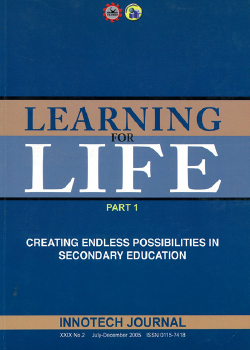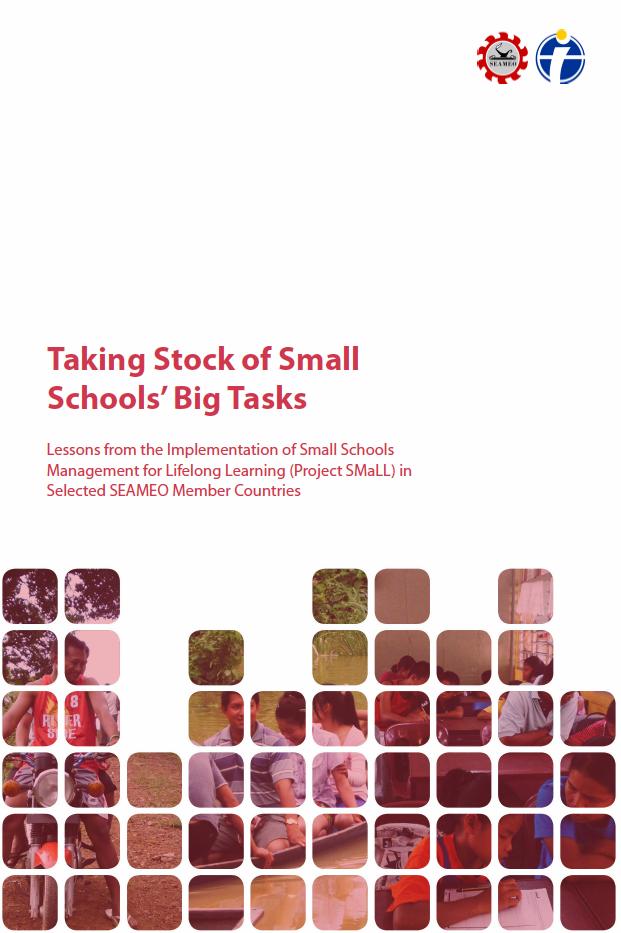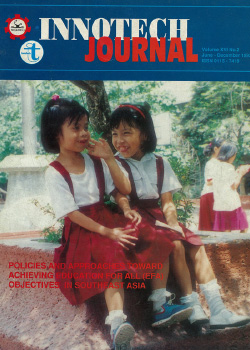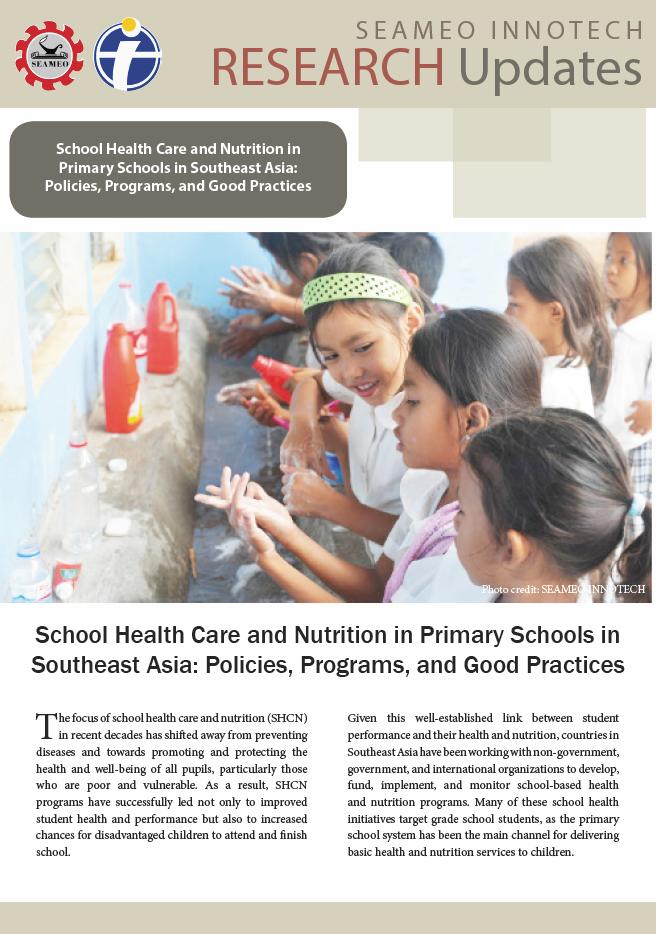
Issue: July – December 2005
Foreword: Education stakeholders from Southeast Asia gathered for the 10th SEAMEO INNOTECH International Conference to flesh out the theme “Learning for Life: Creating Endless Possibilities in Secondary Education,” which underscores the key role of secondary education in linking primary education to tertiary education or employment. While gains in the development of elementary education have been sustained and tertiary education have been constantly upgraded in many countries, secondary education has not fared as hoped, becoming what some call the weak link in the education process. The inadequate attention given to secondary education has bored gaping holes in the competencies (knowledge, attitudes, skills) needed by students to carry on successfully to tertiary studies or the world of work.
It is imperative, therefore, that secondary education should provide better alternatives for students, particularly their options for further education or for joining the workforce. Governments in the developing world have looked hard for ways to strengthen secondary education, aware of its value in reinforcing what is learned at the elementary level while outfitting students with minimum skills to survive in higher education or land and keep a job. The articles in this volume explore various aspects of this theme.
Azian’s discussion of the Malaysian Smart School Initiative focuses on the implementation of new teaching and learning processes at the pilot schools and the challenges faced by the schools in trying to achieve the goals of the initiative. It was an ambitious project that brought together the education ministry, private industries and other partners to work hand in hand to create a schooling culture that is informed, creative, and uses technology as an enabler in the teaching and learning process. The project is a response to the country’s need to transform from a production-based to a knowledge-based economy by 2020. Starting with 87 pilot schools, it is now being expanded to 10,000 schools by the year 2010. The author looks at the challenges faced by the schools in trying to achieve the goals of the “smart schools” and assesses the post-pilot phase and roll-out plans of the Ministry to move towards achieving Malaysia’s vision of producing knowledge-based workers.
Andrada argues that reducing school dropouts is not just about providing an alternative learning system. In the Philippines, the popular approach to dropout reduction is to provide an alternative learning system that would allow at-risk students to complete their basic education outside of a formal school structure. Such an approach, however, suffers from a too-linear view of the problem of school dropouts. Research and Philippine experience reveal that the problem is brought on by a host of factors, hence, the dropout intervention cannot certainly be limited to how education is delivered. What has emerged from the experience of public secondary schools and their communities is an integrated, systemic and collaborative approach to dropout reduction that recognizes the uniqueness and capacities of schools and is personalized and customized to the need of at-risk students as it addresses the specific causes of dropping out. The paper presents the model that has evolved as some of these school communities participating in the Secondary Education Development and Improvement Project experiment with ways of addressing the problem. Lessons are drawn from this experience to guide other school communities in saving students at-risk of dropping out.
Cupino relates the story of the Center for Positive Futures in shaping social responsibility in secondary education. The Center us a private technical-vocational high school for the economically disadvantaged domestic helpers, vendors, factory workers, construction workers, fisher folks, government employees, agricultural entrepreneurs, drivers, overseas foreign workers, and ordinary folks. Many of these families would not ordinarily send their children to a private school but could do so because the tuition fee is very affordable (about US$1 a day). The banner programs include values formation, the multiple intelligence paradigm, students career development, income-generation program for parents, and community interactivity. These are designed so that the school could go beyond academic excellence towards commitment to the holistic development of the child their families and the communities.
Dela Torres’ Lessons on Learning from Life, for Life shares insights from the Education for Life Foundation which seeks ways to combine radical and liberal education, and whose initial focus on education for democracy and citizenship expanded to education for livelihood. The Foundation brought together the Philippine tradition of folkehojskole. Lessons from its work with adult school youth, approaching them as young adults rather than older children. ELF advocates a strategy of “walking on two legs” toward secondary education: 1) focus on the learner and the learning; 2) link learning to life and life to learning; and 3) develop the drive to learn. Boransing discusses the development and institutionalization of madrasah education as a component of the Philippine education system. He proposes a Road Map for Upgrading Muslim Education to close the disadvantageous gap in the education of Filipino Muslims. The Road Map’s current focus is the development of instructional materials, and by the design of the Secondary Education Curriculum to ensure a public school system that is Islamic-friendly to all Muslim learners.
Geun describes the work of the Asia-Pacific Center for Education for International Understanding, a UNESCO center, in building peace that is founded on the intellectual and moral solidarity of mankind and not based exclusively on the political and economic arrangement of governments. UNESCO recognizes that the only to establish world peace and human security is to teach mutual understanding and respect, freedom, justice, peace and the value of human dignity through education. The Center has been organizing the training of teachers and teacher educators and developing educational materials for schools and civil society. These are adapted to local contexts through collaboration with local partners.Kettle adds to the EIU discussion at the classroom level by looking at why the need for EIU has become a matter of urgency and why it should constitute a substantive part of any country’s national curricula. Successful projects are cited to illustrate how young people can be encouraged and supported to become protagonists active in their communities rather than remaining as passive recipients.
Some tools and ideas that can be adapted and adopted by teachers for practical classroom implementation are also presented. Matugas ventures into how secondary education, the community, and its economic context interplay at the local level. She shares the story of a small-scale, community-based, grassroots-initiated project in Leyte, an economically diverse province in the Philippines. The concepts presented show how best to position secondary education, particularly at the community level, by sharing some of Leyte’s experiences in how to bring secondary schools in the development framework of the community; how to effectively improve quality of secondary education through educational governance at the local level; how to reconfigure the teaching of academics where science-oriented education and problem-solving skills hold the highest premium in the workplace; how to align the teaching of academic subjects using entrepreneurship as learning context; how the private sector figures in community education; and how to prepare students for the workplace and for life.
To access all articles in this issue, email us at info@seameo-innotech.org









